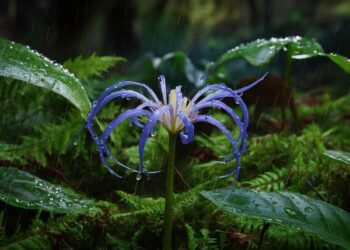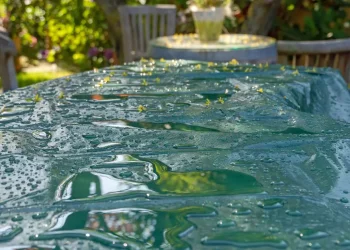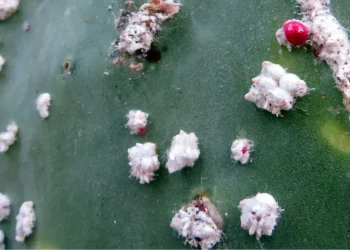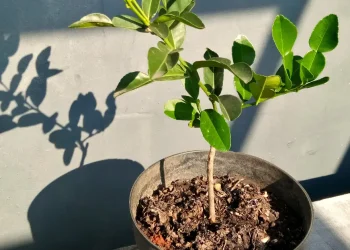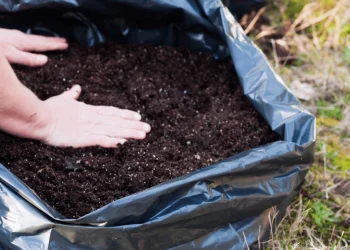Orchids are known literally forever – the first mention of orchids is dated back to 300 B.C. But there are still lots of things shrouded in mystery, like orchid’s air roots.
I always found them very interesting. Roots that are growing everywhere around the pot, looking like they want to escape.
But can an orchid survive solely with air roots? Well, it can’t, it still needs terrestrial roots (roots inside the soil) for various reasons. While it’s true that air roots can also absorb moisture or nutrients dissolved in the air, there are quite a few things they can’t keep up with.
Now, without further ado, let’s take a closer look at the orchid root system. Why it can or can not survive with only air roots, and what the function of the two types of orchid roots are.
Understanding Orchid Root System
Orchids have a unique root structure, where one type of root can take on two very distinctive forms.
Crawling above the ground, you can find air roots, also known as aerial roots. These air roots often appear as slender, silvery extensions that reach out into the air. Their primary role is to absorb moisture and, to a limited extent, nutrients from the surrounding atmosphere.
Orchids also possess another set of roots that remain below the surface, known as terrestrial roots or below-ground roots. These roots serve as the anchoring foundation for the orchid, ensuring stability and support. Terrestrial roots are the primary conduits for nutrient absorption, drawing essential elements from the potting medium and any applied fertilizers.
What to Know about Orchid’s Air Roots
As I already mentioned, air roots are experts at absorbing moisture from the surrounding air. But how so?
They possess a specialized tissue called velamen, which acts like a sponge, allowing them to absorb and store water vapor and humidity. That’s also what causes the unique silvery coloration of the roots.
In addition to moisture absorption, air roots also play a limited role in nutrient uptake. While most of the nutrients the plant gets through terrestrial roots from potting mix, air roots can absorb some dissolved minerals and nutrients present in rainwater or organic matter in the air. This ability contributes to orchid’s resilience in nutrient-poor environments.
The presence of air roots is closely tied to the orchid’s natural habitat and its survival strategy. In their native ecosystem, orchids often cling to trees or rocky surfaces, where the potting medium for their terrestrial roots may be scarce. Air roots then supplement those terrestrial roots and sometimes even partially replace them.
What Types of Orchids Rely on Air Roots
All orchid varieties will have both forms of roots – air roots and terrestrial roots. Because orchids can’t survive only with air roots, so these two types complement each other.
However, within the very diverse world of orchids (at least 28,000 species of Orchids are currently known), some varieties may rely on air roots to a greater extent due to their specific adaptations and natural habitat.
Epiphytic orchids, for example, are orchid varieties that typically grow on trees or rocks.
These orchids often have a higher proportion of air roots. Orchid species such as Phalaenopsis, Vanda, and Dendrobium are common examples of epiphytic orchids that have a substantial presence of air roots.
But if you get one of these Orchids, it doesn’t necessarily mean that the plant has diminished the efficiency of its terrestrial roots and won’t do well in pots.
These orchids are highly adaptable and can successfully acclimate to potted conditions. In a pot, they will continue to maintain and utilize both types of roots effectively.
Should you Cut Air Roots off of Orchids?
Air roots, like any other roots, play an important role in the life of your Orchids. So, in general, you should not remove healthy air roots.
If you do so, there’s a good chance of harming your plant. It will diminish its nutrient and water uptake, and you can even introduce bacteria through the exposed spot.
However, if you notice any air roots that have become mushy, brown, or desiccated, it’s a good idea to trim them carefully away, as they are no longer serving their intended function and may even be harboring pathogens. Don’t forget to use sterile tools and take care not to damage nearby healthy roots.
Should you Mist Orchid Aerial Roots?
Since air roots of Orchids are outside the soil, they tend to dry out very quickly. While the soil is still wet, the aerial roots may be dry to the bone. But there’s a simple solution to that: misting.
Depending on your watering schedule and humidity levels in your environment, occasional misting may be beneficial to the plant. For example, my mum doesn’t have to mist the aerial roots at all, while I do that every morning as a part of my morning routine because my environment is considerably drier.
But make sure not to go overboard with it. Excessive misting can lead to issues such as root rot or fungal growth if the roots remain consistently damp.



